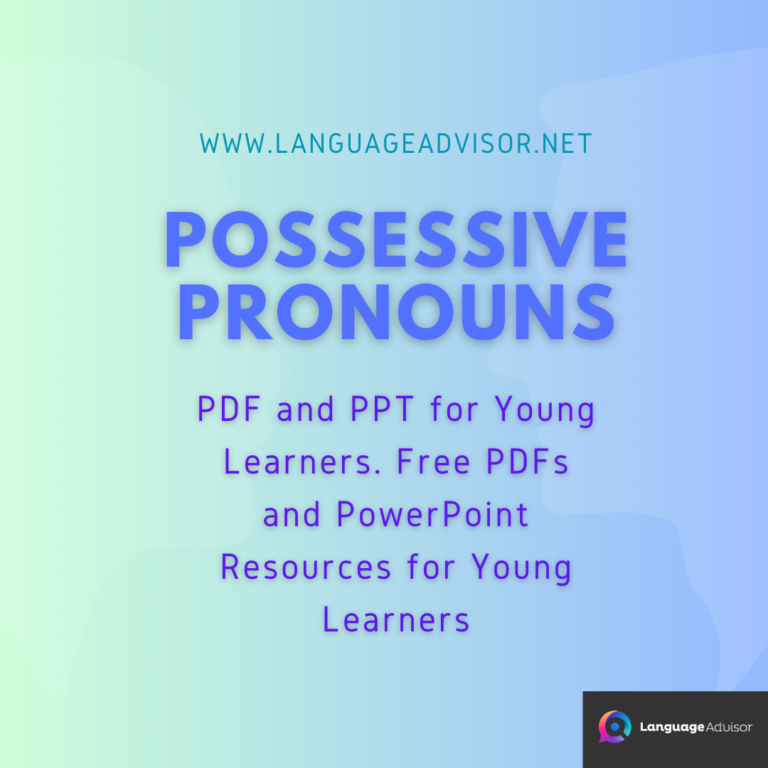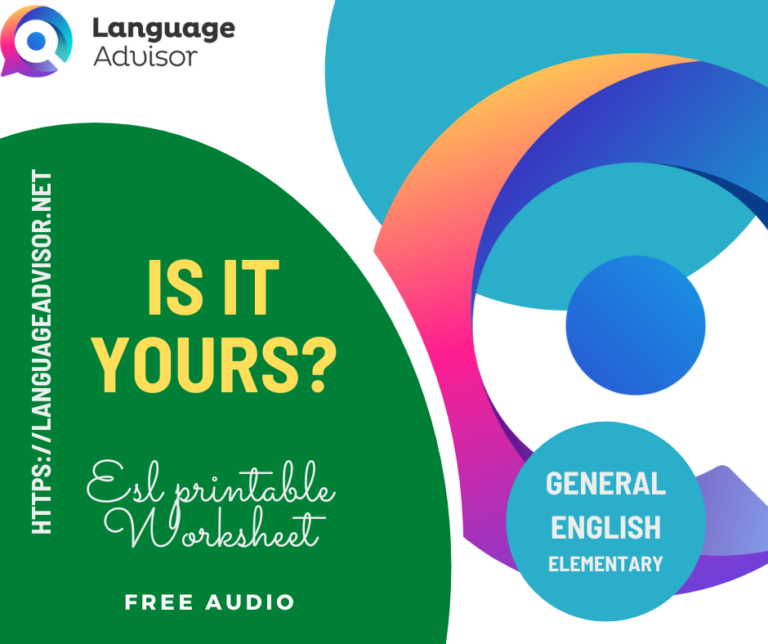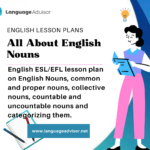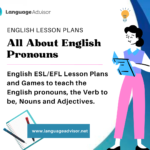All About English Possessives. English ESL/EFL Lesson Plans and Games to teach the Possessive adjectives, pronouns and nouns.
All About English Possessives

Lesson plans
Here you can find a wide range of full lesson plans to use in your classroom.
All of our lessons are designed around themes engaging and relevant to English ESL-EFL learners and can be used to complement your school curriculum, giving students an opportunity to develop their English language and skills in motivating and enjoyable ways.
These lesson plans focus on classroom games and activities oriented around meaningful practice of grammar items in English. The vast majority of the activities have been designed to be simple and easy to apply, without requiring much in the way of additional resources or materials. Wherever possible, games have been presented in a way that makes full use of any natural or genuine communicative aspects embodied in the grammar constructions, though while there is emphasis on understanding the grammar and its functional and communicative aspects, most of the games also highlight the importance of using the grammar accurately.
These lesson plans are intended as a starting point for teachers to adapt and build their own stock of in-class games and activities that can be applied relatively quickly and easily.

All About English Possessives
All About English Possessives: Here are four lesson plans on English Possessives
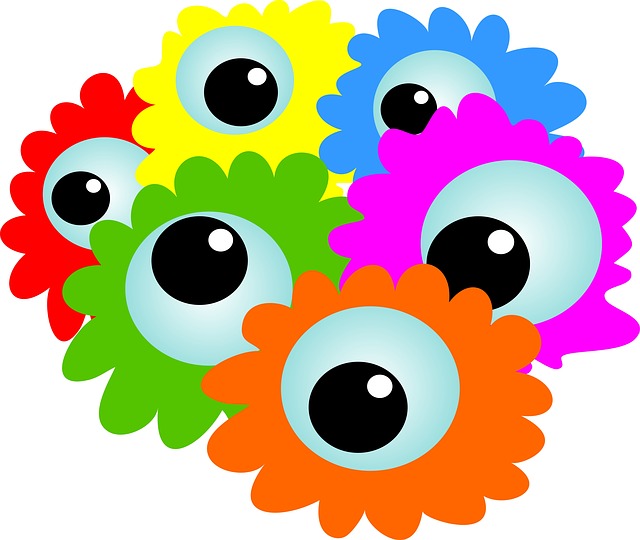
Possessives
Objectives:
The students will be able to make nouns possessive and do so with proficiency.
Warm-Up:
Review all the different categories of nouns: singular, plural, collective, common, proper, countable, and uncountable. Have the students give you examples of each type of noun and be able to give the proper definitions for these nouns. If the students seem comfortable with this, move on with the intended lesson for the day.
Also check out this activity on English Nouns.
Practice/Presentation:
– Explain to the class what possession means and how it is indicated in English: Possession is when there is clear ownership of something or someone. It is when something becomes someone’s.
– To make a singular noun possessive you simply add an apostrophe and add an “s” to the end of the noun. (apostrophe = )
– For example:
the girl’s dress (meaning the girl owns the dress)
Jane’s books (meaning those books are Jane’s)
– To make a plural noun possessive you simply add an apostrophe after the “s”
– For example:
two boys’ bicycles (meaning the bicycles are owned by the two boys)
The girls’ clothes (meaning the clothes are owned by the girls)
– If the noun ends in “-s” you can either add an apostrophe after the “-s” or add an apostrophe and an “-s”.
– For example:
Charles’ gloves OR Charles’s gloves
Tess’ bag OR Tess’s bag
– Have the class now try to make the following words possessive to see if they understand the concept being presented.
1. dog – dog’s
2. manager – manager’s
3. man – man’s
4 Chris – Chris’ or Chris’s
5. thieves – thieves’
6. teacher – teacher’s
7. churches – churches’
8. students – students’
9. brother – brother’s
10. princess – princess’ or princess’s
– For further practice have the students correct the following sentences:
1. Charles car was stolen. – Charles’ (or Charles’s) car was stolen.
2. John mother lives in Japan. – John’s mother lives in Japan.
3. The neighbor is painting Joe house. – Joe’s house
4. I borrowed the teacher dictionary. – teacher’s dictionary
5. My sister name is Mary. – sister’s name
Homework: Have the students write 10 sentences with possessives.


Whose is this?
Objectives:
Showing ownership in the 3rd person
Practice/ Presentation:
Have students give the teacher something small and simple that they own, without other students seeing what has been given (one way to do this could be to have each student go out into the corridor with their school bag and select something from its contents, which goes into a small sack or box held by the teacher).
Once each student has contributed something, run a guessing game whereby students take turns trying to guess who owns each item.
For example:
Teacher: Whose is this? [holds up a pencil]
Student 1: Is it Rachel’s pencil?
Teacher: No it isn’t Rachel’s pencil. [To another student] Whose is this?
Student 2: Is it Darren’s pencil?
Teacher: Why yes! Yes, it is.
Allow up to three guesses per item, and allocate a point for each correct guess. Obviously, it is important not to ask a student who happens to own the item being held up for inspection.

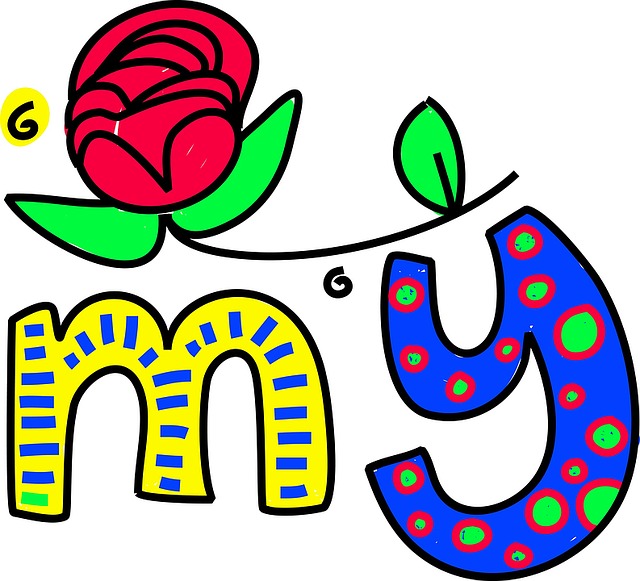
Possessive Adjectives
Objectives:
Showing ownership in 1st, 2nd, 3rd person.
Presentation/Practice:
The teacher thinks of a person everyone in the class is likely to know. This could be a famous person (such as a celebrity), a book character, or even a student in the class. The teacher then provides hints about the person utilizing possessive adjectives, and each student takes a turn to try and guess who the person is based on the clues provided so far.
For example:
Teacher: His sweater is blue.
Student 1: Is it Tom?
Teacher: No, it isn’t. His hair is brown.
Student 2: Is it Steven?
Teacher: No, it isn’t. His shoes are blue and red.
Student 3: Is it Patrick?
Teacher: Yes, it’s Patrick!
The game can be adapted in two ways. One is to allow students themselves to choose the mystery person and provide hints that other students use to guess who the person is. The other application involves using a different possessive pronoun function each round. In the
example above, 3rd person was utilized, though the teacher easily could have said “My sweater is blue” to which the student would guess “Are you Tom?” in order to apply 1st and 2nd person possessive adjectives.


Possessive Pronouns
Objective:
Showing ownership in 1st, 2nd, 3rd person
Practice/Presentation:
This is similar to the previous activity, in that students are asked to put personal items into a sack or box. In this application, however, students then approach the teacher individually and identify first their own object and then try to guess the ownership for the remaining
items.
For example:
Student 1: This eraser is mine.
Teacher: OK. And how about this green pencil? Whose is this?
Student 1: It’s hers. [Points at Student 3] Is it yours?
Student 2: No, it’s not mine.
Student 1: It’s his. [Points at Student 4] Is it yours?
Student 4: Yes, it’s mine.
A good way to ‘score’ this game and to encourage accuracy is the give penalties for each grammar mistake made and points for each person asked. Thus, if a student tries questioning four students in the class and uses grammar incorrectly on two of those occasions, they would still finish their turn with 2 points. On the other hand, if no mistakes were made they would finish with 4 points. Students could also be given points and penalties for their responses to questions.

All About English Possessives: Also Check out these resources on the English Possessives




